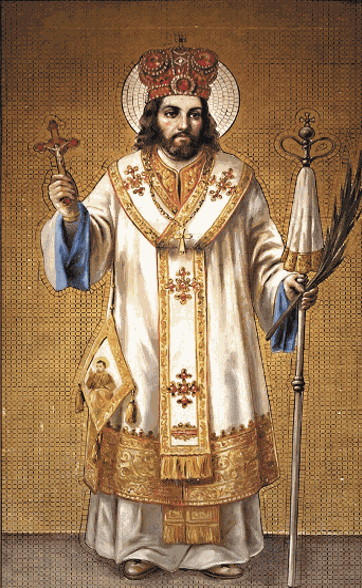St. Josaphat Kunsevich
Who was St. Josaphat?
In 1595, the Orthodox bishop of Brest-Litovsk in present-day Belarus and five other bishops representing millions of Ruthenians, sought reunion with Rome. John Kunsevich—who took the name Josaphat in religious life—was to dedicate his life, and die for the same cause. Born in 1580 in what is now Ukraine, he went to work in Wilno and was influenced by clergy adhering to the 1596 Union of Brest.
As a youth, he turned down a marriage arrangement and business partnerships in order to enter a monastery in 1604, when he took the name Josaphat. He became a Basilian monk, then a priest, and soon was well known as a preacher and an ascetic. He lived a life of prayer and discipline and as he matured, was named bishop of a local church in present-day Ukraine that was in great need of reform.
At a relatively young age, upon becoming both bishop of Vitebsk and archbishop of Polotsk, Josaphat faced a difficult situation. Most monks, fearing interference in liturgy and customs, did not want union with Rome. By synods, catechetical instruction, reform of the clergy, and personal example, however, Josaphat was successful in winning the greater part of the Orthodox in that area to the union. He led by example and instituted changes that helped clergy and laity alike live more faithfully.
But the next year, Schismatic Orthodox bishops took up residence in the same area, claiming priority in the faith among the people and a dissident hierarchy was set up. His opposite number spread the accusation that Josaphat had “gone Latin” and that all his people would have to do the same. He was not enthusiastically supported by the Latin bishops of Poland. Conflict arose, and Josaphat was unfairly discredited. He tried to calm the troubles by speaking out, knowing full well that it might cost him his life. "If I am counted worthy of martyrdom,” he said, “then I am not afraid to die."
He urged patience and forbearance among his people, even when they were incited to violence. Despite warnings, he went to Vitebsk, still a hotbed of trouble. Attempts were made to foment trouble and drive him from the diocese: A priest was sent to shout insults to him from his own courtyard. When Josaphat had him removed and shut up in his house, the opposition rang the town hall bell, and a mob assembled. The priest was released, but members of the mob broke into the bishop’s home. Tensions rose until finally a mob gathered and took him by force — Josaphat was struck with a halberd, then shot, and his body thrown into the river. It is said that the Jewish people of the city acted heroically amidst the violent mob — they risked their own lives to try to protect Josaphat and his friends and servants. These Jews saved many lives and they were the only ones to publicly accuse the killers of Josaphat and mourn his death while the Catholics of the city hid.
Josaphat’s death brought a movement toward Catholicism and unity, but the controversy continued, and the dissidents, too, had their martyr. The violence convinced many in the city that things had gone too far, and public opinion moved towards unity. Orthodox opposition leaders came to reconcile with Rome.
His body was later recovered and is now buried in St. Peter’s Basilica in Rome. The relics of St. Josaphat rest in the reliquary chapel. He was the first saint of the Eastern Church to be canonized by Rome. St. Josaphat is the patron saint of Ukraine.
After the partition of Poland, the Russians forced most Ruthenians to join the Russian Orthodox Church. In 1964, newspaper photos of Pope Paul VI embracing Athenagoras I, the Orthodox patriarch of Constantinople, marked a significant step toward the healing of a division in Christendom that has spanned more than nine centuries.
St. Josaphat, who gave your life for the unity of Christians and inspired reconciliation with your death, pray for us!
Learn more about St. Josaphat:
 Click here to read more about St. Josaphat
Click here to read more about St. Josaphat
